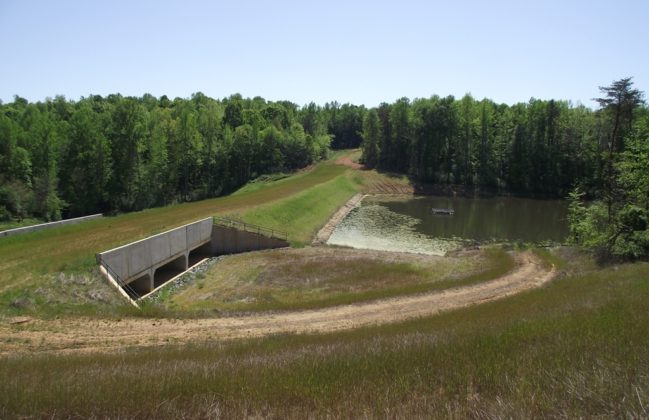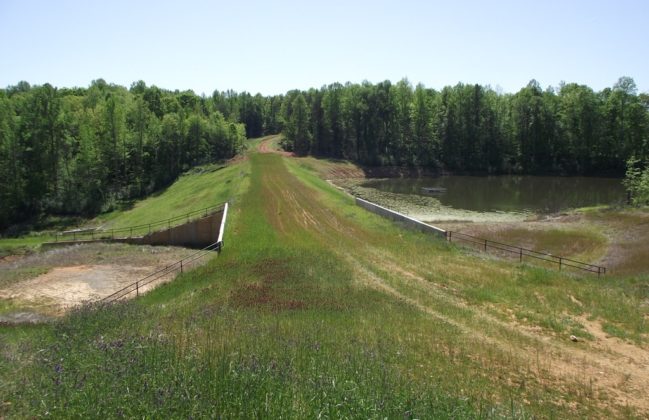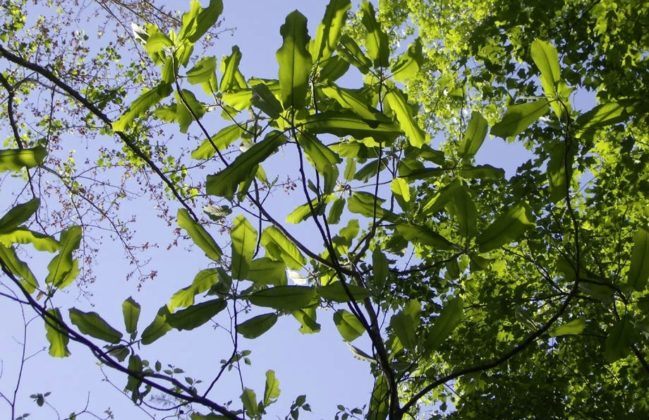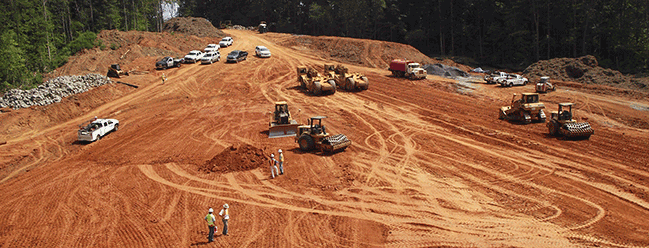George Poston Park Dam
In the 1990s, Gaston County received a donation for a 344-acre property for use as a public park. S&ME provided geotechnical services in connection with design and development of a dam to create an approximately 11-acre lake in George Poston Park. The lake would enhance existing open space and increase habitat variety within the park. In addition, it would provide passive recreation opportunities such as fishing and wildlife viewing. Finally, the lake would serve as an irrigation source for the existing athletic fields.
Our team developed complete design plans and specifications for the 35 x 10-foot dam. S&ME also assessed the hydrologic contribution of the watershed to the lake. Due to the close proximity of homes immediately downstream, S&ME modeled the potential flooding of the downstream channel resulting from a simulated breach of the dam. The breach analysis identified the impacted homes. As a result, an Emergency Action Plan was prepared in case of dam breach.
S&ME performed a geotechnical subsurface exploration and geotechnical analyses for the new dam embankment including review of previous engineering studies at the site, performing soil test borings, exploring potential dam borrow sites, performing extensive laboratory testing to estimate embankment material engineering properties and strength, and seepage and slope stability analyses required to meet North Carolina Dam Safety requirements for a High Hazard Dam. S&ME performed seepage and slope stability analyses under routine conditions and extreme storm events.
In addition, our team provided jurisdictional delineation of on-site streams and wetlands. S&ME also perfomed protected species and cultural resources assessments. The project acquired an Individual Permit (IP) from the U.S. Army Corps of Engineers and a 401 Water Quality Certification (WQC) from the North Carolina Division of Water Quality (DWQ). To account for the unavoidable loss of the on-site stream, S&ME also developed a mitigation plan that included construction of littoral shelves vegetated with wetland plant species along portions of the lake, preservation of over 14,000 linear feet of on-site stream, and re-location of rare bigleaf magnolia (Magnolia macrophylla) trees located within the lake footprint to elsewhere within the park.








